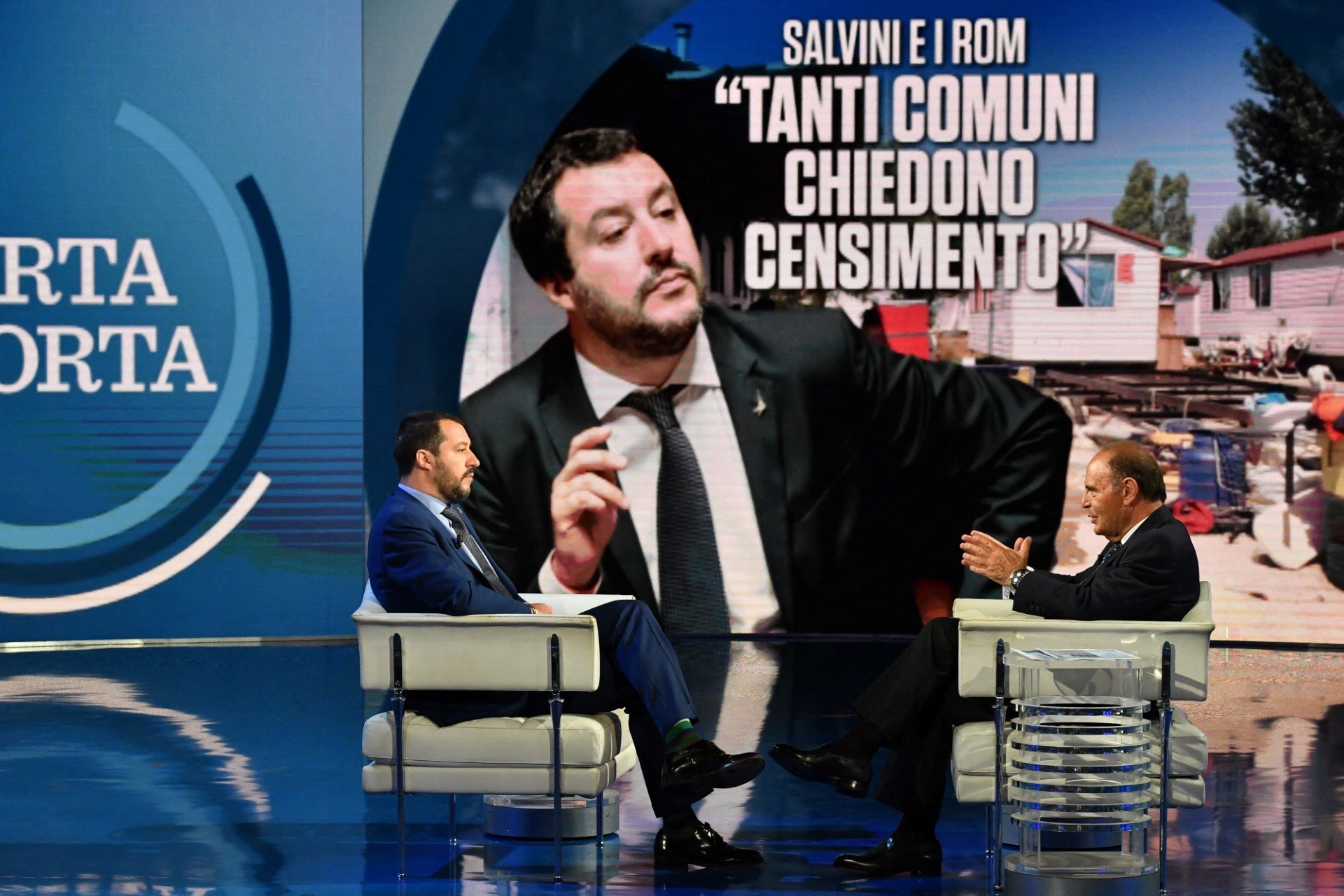Just 21 percent of Italians voters went to the polls in a June 12th referendum on reforms to the country’s justice system – the lowest turnout in Italy’s post-war history, prompting media outlets to describe it as a “historic flop”.
READ ALSO: Italian voter turnout at all-time low in ‘flop’ referendum
Turnout was also low in municipal elections held in 975 towns and cities across Italy on the same date – 54.7 percent compared 60.1 percent in previous similar elections, according to news agency Ansa.
Mayoral elections in October 2021, including in Rome, Milan, Naples, Turin and Bologna reflected a similar pattern: an average of 54.7 percent of residents voted, compared to 61.6 percent in the last elections. In all the regional capitals apart from Bologna, less than one in two citizens went to the polls.
And it’s not just local elections – which have never attracted that high a turnout – that are experiencing a decline in voter interest.
Italy’s 2018 national elections had the lowest turnout since the republic’s foundation in 1946, with 72.9 percent of the electorate voting; down from 88.8 percent in 1987, 83.6 percent in 2006, and 75.2 percent in 2013 (until 1983, the figure was consistently above 90 percent).
Leonardo Morlino is Professor Emeritus of Political Science at LUISS University and a former president of the International Political Science Association. As part of a parliamentary committee on elections, he recently co-authored the white paper ‘For civic participation, how to reduce abstentionism and facilitate voting’ (‘Per la partecipazione dei cittadini, come ridurre l’astensionismo e agevolare il voto‘).
The Local interviewed Professor Morlino to ask why this referendum failed so badly; why referenda in general are no longer widely attended in Italy; and why fewer Italians than ever are going to the polls.
Why did so few Italians turn out to vote in this referendum?
Popular or ‘abrogative’ referenda (which are different to constitutional referenda, and have the power only to repeal laws) have on the whole become unpopular in Italy in recent decades. Of the nine referenda held between 1974 and 1995, eight attracted the participation of more than 50 percent of voters; between 1997 and 2022, that figure was directly reversed.
A voter participation ‘quorum’ of at least 50 percent plus one is required for the results of a referendum in Italy to be binding, meaning almost none of the popular referenda held in the past 18 years have had any lasting impact.
Even against this unpromising backdrop, however, this latest referendum did particularly badly. So what happened?
Firstly, says Professor Morlino, there was almost no campaigning in the weeks leading up to the vote by the far-right League party who had pushed for the referendum to be held in the first place, after League leader Matteo Salvini realised he’d made a bad move.
The questions contained in the referendum were far too complex to be understood by the average person without specialised legal knowledge, and parts of the left were actively discouraging people from participating.
READ ALSO: What are Italians being asked to vote on in Sunday’s ‘justice referendum’?
“Repubblica, one of the more influential newspapers, said ‘don’t vote’, the Democratic Party, one of the first parties, said ‘don’t vote’ – then the questions were so complex… When Salvini got this point, he could not have the image that he was being defeated, so he didn’t run a campaign,” Morlini says.
“Salvini in this was unbelievably cynical, in forgetting totally, there was virtually no campaign. At the same time, it was impossible for a citizen to understand without a very strong campaign – we would have needed a very strong continuous campaign for several weeks to have more people.”
If Salvini knew this referendum was likely to fail, why did he bother with it?
Given the consistently poor turnout for popular referenda over the last two decades, a lot of people have been left wondering why Salvini thought it would be a good idea to back a referendum in the first place.
Morlini says it’s not to be discounted that Salvini’s communications manager was fired in September of last year following a drugs scandal and police investigation, and since then he’s been without an advisor.
“No one’s mentioned this, but it’s actually an important point,” says Morlini.
“Salvini is not a leader with some kind of insight – he’s very reactive. He’s neither someone with a real education, nor a person who in essence is thoughtful.”
“He got the idea that if I do something on the justice system, this can become very popular – without thinking of all the problems, without thinking that in the justice system every issue is very complex, very delicate.”
Morlini also notes that the referendum as initially proposed included an additional, sixth question on making ‘magistrates’ (in the Italian justice system, a magistrate is either a judge or a public prosecutor) personally liable in cases where an innocent person has been imprisoned – but this was disallowed by Italy’s Constitutional Court.
“The Constitutional Court did not accept some questions that were simpler and more interesting for people, and only accepted the standard questions that were much more complex,” Morlino says.
“In a sense, they broke the toy that Salvini had built.”
What changed in the mid ’90s that meant most Italians stopped voting in popular referenda?
The first abrogative referendum in Italy was in 1974, inviting Italians to repeal the country’s recently passed divorce law (they politely declined). That was followed a few years later by a vote on abortion, in 1981.
Both were widely attended, with respective turnouts of 87.7 and 79.4 percent; but in the years that followed, the questions put before voters became increasingly more abstruse and less obviously relevant to people’s lives.
“The referendum is a key tool of direct democracy,” says Morlino. “But in Italy in the late ’70s, ’80s, ’90s, this tool was taken over by political parties.”
Italy’s legislative processes are complex and lengthy, Morlino notes. “This worked very well when there were real parties, but with parties now very fragmented and personalised, it’s much more difficult to have a bill approved through this complex procedure, because even within the party you have someone who comes out and says ‘No, I disagree’.”
Although abrogative referenda are technically only meant to repeal laws, politicians soon realised that if they got creative with which clauses they scratched from the existing texts, they could in fact use them to introduce new ones – allowing them to bypass traditional legislative procedures with their holdups and deadlocks.
“The referendum of April 18th, 1993, which was used to introduce a new electoral law, was the first moment when the referendum was clearly instrumentalised. And it was successful!” Morlio says.
“So later on, parties adopted the referendum as a way of picking up an issue they were not able to get a decision on in parliament.”
“In this moment, above all in this last decade, in a sense they destroyed the referendum, it was in a sense spoiled. I don’t think we’ll have another referendum in the next few years,” Morlino concludes.
Why are fewer Italians voting in elections generally?
That may the reason for declining participation in popular referenda – but what about Italian elections more generally?
Morlino says there are three main factors behind voter abstention: indifference and dissatisfaction; protest and radicalisation; and ‘physiological’ reasons leading to involuntary abstention (e.g., advanced age or illness making it difficult to reach the voting booth, or living in a town other than the one you’re officially resident in).
“These three have been a part of all elections in Italy in the past 30 years, although alienation and indifference developed much more after the Great Recession in 2008 and 2009,” says Morlino.
While post-recession voter disaffection certainly restricted isn’t to Italy, Morlino says, it is particularly pronounced in southern European countries like Italy, Spain and Greece, which saw widespread protests against the EU’s austerity policies.
“You cannot explain the success of neo-populist parties in Greece, Italy and Spain if you don’t take into account this growing dissatisfaction and protests in these years,” says Morlino.
“And of course with the pandemic and now with the economic consequence of the Russian invasion, we are back to this kind of growing dissatisfaction, particularly in this country.”
As for the third factor, Italy is also particularly vulnerable here – in large part due to its own lack of foresight.
“In the ’90s, there were several bills approved in different European countries to make the vote easier. In Italy, nothing happened – even earlier this century. Why? Because participation was very high.”
Although Italians living abroad are able to vote by post, no postal vote is currently available to Italian citizens in Italy.
To fix this issue, the parliamentary committee of which Morlino is a member recently proposed the introduction of an Italian postal vote, saying it would serve as an important tool to combat abstention.
Another measure the committee has proposed, says Morlino, is introducing a dedicated ‘electoral day’ to allow people to take time off work to go and vote, rather than holding elections on weekends and holidays when it’s often the last thing on people’s minds.
Would it be likely to make much difference? Who can say, but with last Sunday’s elections competing with a day at the beach in temperatures of above 30C, it might be a start.





 Please whitelist us to continue reading.
Please whitelist us to continue reading.
Overall, the arduous and incomprehensible burocrazia Italiana has long been an obstacle to progress and clarity when it comes to all things, including voting. The national elections are way overdue, and most Italians do not trust a government they consider overbearing, obtuse and, above all after the pandemic overreaches, illegitimate. Italians are angry and have less trust in government than ever.